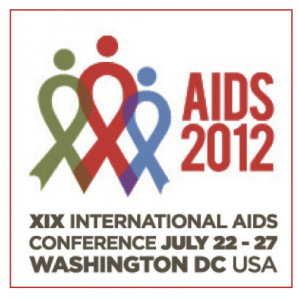Volume 13 Number 7/8 July/August 2012
1 August 2012. Related: Editorial.
 This issue of HTB includes the wealth of data presented before and during the 19th IAS World AIDS Conference in Washington DC in July.
This issue of HTB includes the wealth of data presented before and during the 19th IAS World AIDS Conference in Washington DC in July.
Our first reports from IAS 2012 focus on new antiretrovirals, regimens and strategies including the investigational integrase inhibitor dolutegravir and booster cobicistat; in vitro and animal data that might help to assuage concerns about potential toxicities with BMS-98600, which being a derivative of d4T has a hard reputation to shake off; and first observed association between atazanavir and gall stones.
There was some overlap between IAS 2012 and the excellent 4th International Workshop HIV Pediatrics preceding it so we have combined the reports from both meetings. These include the first data from infants and children receiving Cipla’s sprinkle formulation of lopinavir/ritonavir from CHAPAS-2 (supported by the Monument Trust). We have been following this development for some time and it is encouraging to see a product under investigation specifically targeting this population in resource limited settings where infants and young children badly need new options that are fit for purpose.
Two prevention studies looking at maraviroc in macaques and mechanisms for the benefit from medical male circumcision are respectively disappointing and illuminating.We also include an overview of cure research presented at the meeting – which had a high profile including an interesting satellite. As well as these reports we have a round of some of the more useful publications released at IAS 2012, which were abundant (and of variable quality). MSF had a particularly bumper crop.
Also preceding the main conference was the 14th International Workshop on Co-morbidities and Adverse Drug Reactions (Lipodystrophy Workshop). From this we report on a study looking at proteinuria as a potential early marker of tenofovir-related renal toxicity and an ageing study showing a higher incidence of one or more co-morbiditiy plus a higher number of co-morbidities in HIV positive people compared to negative controls.
Finally, for a change of scenery, we include reports from Sitges in June, where 20th International HIV Drug Resistance Workshop was held. From this meeting we have – among others – a further report of in vitro data for BMS-98600, this time showing its resistance profile, and a depressing first case report of transmission with five-class drug resistance. Plus, TAG’s Richard Jefferys urges caution when interpreting new data on the Berlin patient presented here and provoking some misleading articles.
In the midst of all this activity, in July, the US Food and Drug Administration (FDA) approved Truvada (tenofovir/FTC) to reduce the risk of HIV infection in uninfected people who are at high risk of acquiring HIV. The first antiretroviral approval for PrEP.
So, if you have a post-Olympic gap to fill there is plenty of summer reading to be had!

